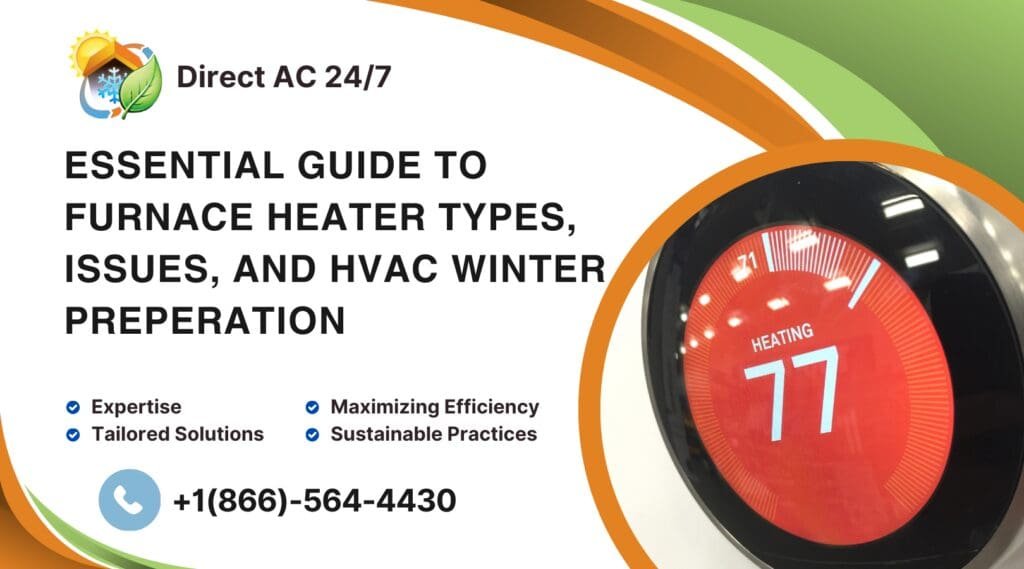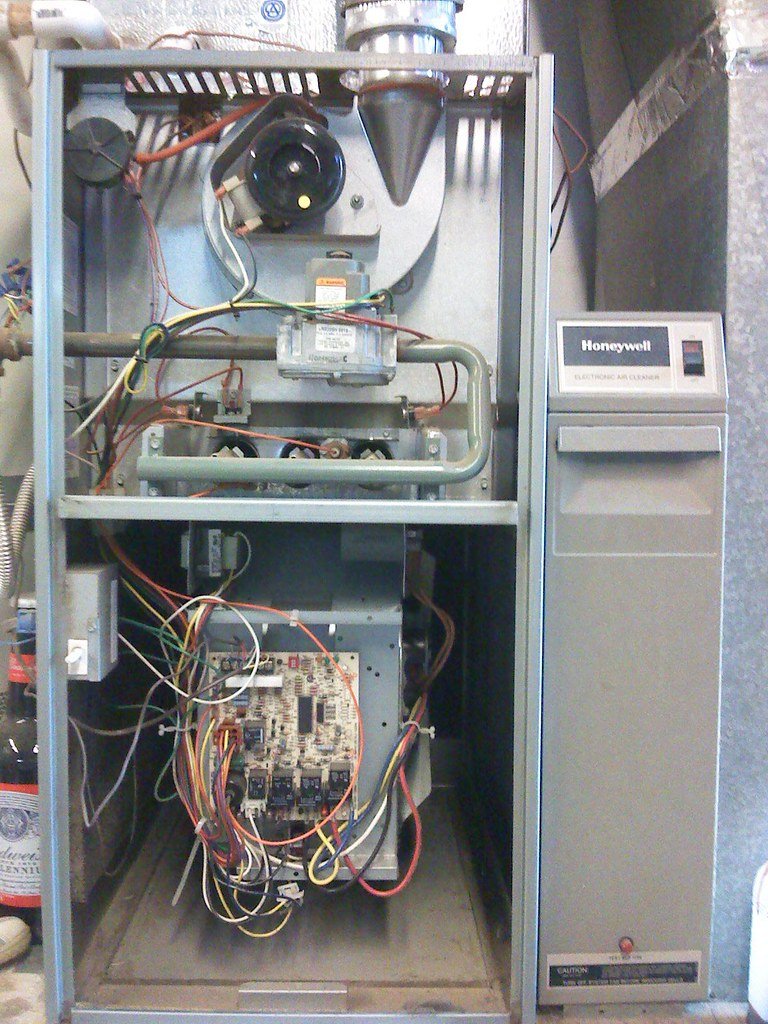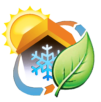As winter’s chill approaches, ensuring your heating system is in top-notch condition becomes paramount. Furnaces are the backbone of any home’s heating system, and understanding the different types, common issues, and proper preparation methods can save you from a frosty predicament. This essential guide delves into everything you need to know about furnaces, from identifying common problems to comprehensive winter preparation strategies.
Understanding Different Types of Furnaces
Furnaces come in various types, each designed to meet different heating needs and efficiency standards. The most common types are gas, electric, oil, and propane furnaces. Gas furnaces are popular for their cost efficiency and strong heating capability, making them a favorite in areas with colder climates. Electric furnaces, while less efficient in terms of energy consumption, are easier to install and maintain, making them suitable for milder regions.
Oil furnaces, although less common today, remain in use in areas where natural gas is not available. These furnaces can be highly efficient and provide substantial heat but require regular maintenance due to soot buildup. Propane furnaces offer an alternative to gas and oil, often used in rural areas where other fuel options might not be accessible. Each furnace type has its unique benefits and potential drawbacks, making it essential to choose the one that fits your home’s specific needs and location.

Understanding the specifics of each furnace type helps homeowners make informed decisions about installation, maintenance, and potential upgrading. Knowing your furnace type can also aid in troubleshooting and identifying issues early, ensuring your home stays warm throughout the winter months.
Common Furnace Issues and How to Identify Them
Furnaces, like any other home appliance, can develop issues over time. One of the most common problems is a furnace not producing enough heat. This issue can stem from various causes, such as a malfunctioning thermostat, clogged filters, or issues with the pilot light. Regularly checking and replacing filters, and ensuring the thermostat is functioning correctly, can often resolve these issues.
Another frequent problem is strange noises emanating from the furnace. Rattling, banging, or squealing sounds can indicate loose components, a failing blower motor, or even problems with the ignition system. These noises should not be ignored, as they often signal that the furnace requires immediate attention to prevent more significant damage.
Short cycling, where the furnace turns on and off frequently, is another issue that can impact heating efficiency. This problem is often caused by an oversized furnace, a malfunctioning thermostat, or insufficient airflow. Identifying and addressing these issues promptly can improve furnace performance and extend its lifespan.
How to Prepare Your Furnace for Winter
Preparing your furnace for winter is essential to ensure it operates efficiently throughout the colder months. Begin by scheduling a professional inspection and maintenance service. A qualified technician will clean internal components, check for wear and tear, and ensure all parts function correctly. This proactive step can prevent unexpected breakdowns during peak usage.
Next, replace or clean the furnace filters. Dirty filters can restrict airflow, forcing the furnace to work harder and reducing its efficiency. Regularly changing the filters, ideally every one to three months, keeps the system running smoothly and improves indoor air quality.
Additionally, ensure your home’s vents and registers are unobstructed. Blocked vents can impede airflow, causing uneven heating and increased strain on the furnace. Walk through your home to check each vent and remove any obstructions, ensuring warm air can circulate freely throughout your living spaces.
Fixing Common Problems with Your Heating System
When addressing common heating system problems, start with the simplest solutions. If your furnace isn’t producing heat, check the thermostat settings and ensure it’s set to ‘heat’ mode. Verify that the thermostat batteries are working and replace them if necessary. Sometimes, a simple battery replacement can resolve what seems like a significant issue.
If the furnace is making unusual noises, inspect the blower motor and fan belt for signs of wear or damage. Tighten any loose components and lubricate moving parts as needed. If the problem persists, it might be time to call a professional to inspect and repair the issue to prevent further damage.
For short cycling problems, start by examining the furnace filter. A clogged or dirty filter can restrict airflow and cause the furnace to overheat, leading to frequent cycling. Replace the filter and observe if the issue resolves. If not, it could be a sign of a more complex problem, such as an oversized furnace or issues with the thermostat, requiring professional assessment.
What to Do About a Burnt Smell from Heating
A burnt smell coming from your heating system when you first turn it on is relatively common and usually not a cause for alarm. This odor often results from dust settling on the heat exchanger or elements during the offseason. When you turn on the furnace, this dust burns off, creating a noticeable smell. Running the system for a short period should dissipate the odor.

However, if the burnt smell persists, it could indicate more serious issues, such as an overheating component or electrical problem. Turn off the furnace immediately and inspect for visible signs of damage or burnt wiring. If you cannot identify the source, it’s best to contact a professional for a comprehensive inspection.
Maintaining a clean and well-maintained furnace can prevent burnt smells. Regular cleaning of internal components and replacing filters can minimize dust buildup and ensure your furnace operates efficiently and safely throughout the winter.
Ensuring Optimal Furnace Performance in Winter
To ensure optimal furnace performance during winter, routine maintenance is key. Schedule an annual professional service to clean and inspect the furnace thoroughly. Technicians can identify and address potential issues before they become significant problems, ensuring your heating system runs efficiently and reliably.
Energy efficiency is another critical factor in maintaining optimal performance. Seal any leaks in your home’s ductwork to prevent heat loss and improve overall system efficiency. Insulating your home properly, especially in areas around windows and doors, can also help maintain consistent indoor temperatures and reduce the workload on your furnace.
Consider upgrading your thermostat to a programmable or smart model. These devices allow for better temperature control and can reduce energy consumption by adjusting the heating schedule based on your daily routine. Proper thermostat management ensures your furnace operates only when necessary, enhancing both comfort and efficiency.
Troubleshooting Common Furnace Types and Issues
Different furnace types can present unique troubleshooting challenges. For gas furnaces, issues like a malfunctioning pilot light or gas valve can disrupt heating. Check the pilot light to ensure it’s lit and inspect the gas valve for any blockages. If you’re uncomfortable handling gas components, it’s best to seek professional assistance.
Electric furnaces can experience problems with heating elements and circuit breakers. If your electric furnace isn’t heating adequately, inspect the heating elements for signs of damage and ensure the breakers are not tripped. Replacing faulty elements or resetting the breakers can often resolve these issues.
Oil furnaces may suffer from clogged nozzles and filters, leading to inefficient operation or no heat production. Regularly clean and replace these components to maintain optimal performance. Propane furnaces, similar to gas furnaces, can have issues with pilot lights and gas flow, requiring careful inspection and maintenance to ensure safe and effective operation.
Winter Prep: Essential Furnace Maintenance Tips
Preparing your furnace for winter involves several essential maintenance tasks. Start by cleaning or replacing the air filters to ensure proper airflow and efficient operation. Dirty filters can reduce the furnace’s effectiveness and increase energy consumption, leading to higher utility bills.
Next, inspect the furnace’s blower motor and fan. Lubricate the moving parts and tighten any loose components to ensure smooth operation. A well-maintained blower motor ensures consistent airflow and reduces the risk of overheating or mechanical failure during peak usage.
Additionally, check your home’s ductwork for leaks or blockages. Sealing leaks and cleaning ducts can improve airflow and heating efficiency. Proper maintenance of ductwork ensures that your furnace can distribute heat effectively throughout your home, keeping every room comfortable during the cold months.
Addressing Heating System Problems Early
Addressing heating system problems early can prevent small issues from becoming costly repairs. Regularly inspect your furnace and heating system for signs of wear and tear, unusual noises, or performance issues. Early detection allows for prompt repairs, reducing the risk of a complete system failure during the coldest days of winter.
Keep an eye on your energy bills. A sudden spike in energy costs can indicate that your furnace is working harder than necessary due to underlying issues. Investigating and resolving these problems promptly can restore efficiency and save you money in the long run.
Educate yourself about the warning signs of furnace problems, such as frequent cycling, uneven heating, or strange odors. Being proactive and knowledgeable about your heating system’s health can help you maintain a comfortable and warm home throughout the winter season.
Comprehensive Guide to Furnace Winterization
Winterizing your furnace is a comprehensive process that ensures your heating system is ready to handle the demands of the cold season. Start with a thorough cleaning of the furnace and its components. Dust and debris can accumulate over time, reducing efficiency and potentially causing damage.
Next, test the furnace’s ignition system and safety controls. Ensure that the pilot light or electronic ignition is functioning correctly and that all safety mechanisms are in place. Reliable ignition and safety systems are crucial for the safe operation of your furnace throughout the winter.
Finally, review and update your home’s insulation and weatherproofing. Proper insulation and sealing of windows and doors can prevent heat loss and improve your furnace’s efficiency. Combining these steps with regular maintenance and professional inspections creates a robust winterization plan that keeps your home warm and comfortable, no matter how harsh the winter weather.
Preparing your furnace for winter is a critical task that ensures your home remains warm and safe during the coldest months. By understanding the different types of furnaces, recognizing common issues, and following essential maintenance tips, you can keep your heating system running efficiently and effectively. Addressing problems early and winterizing your furnace comprehensively not only enhances performance but also extends the lifespan of your heating system. Stay proactive and informed to enjoy a cozy, trouble-free winter season with a well-maintained furnace.
